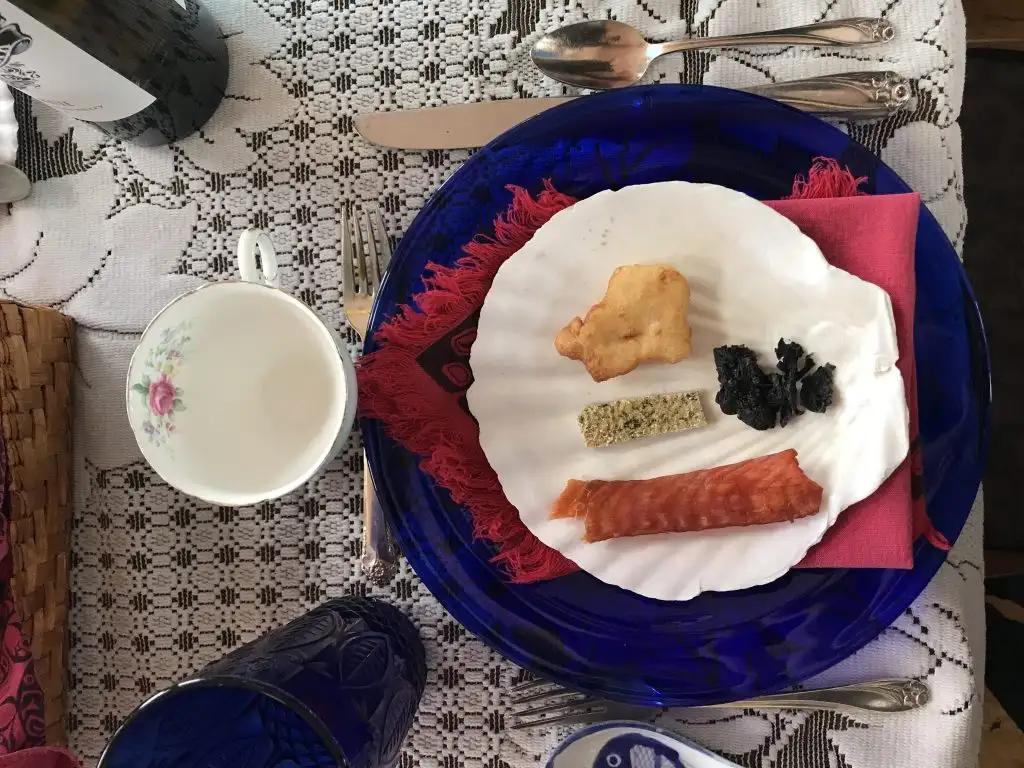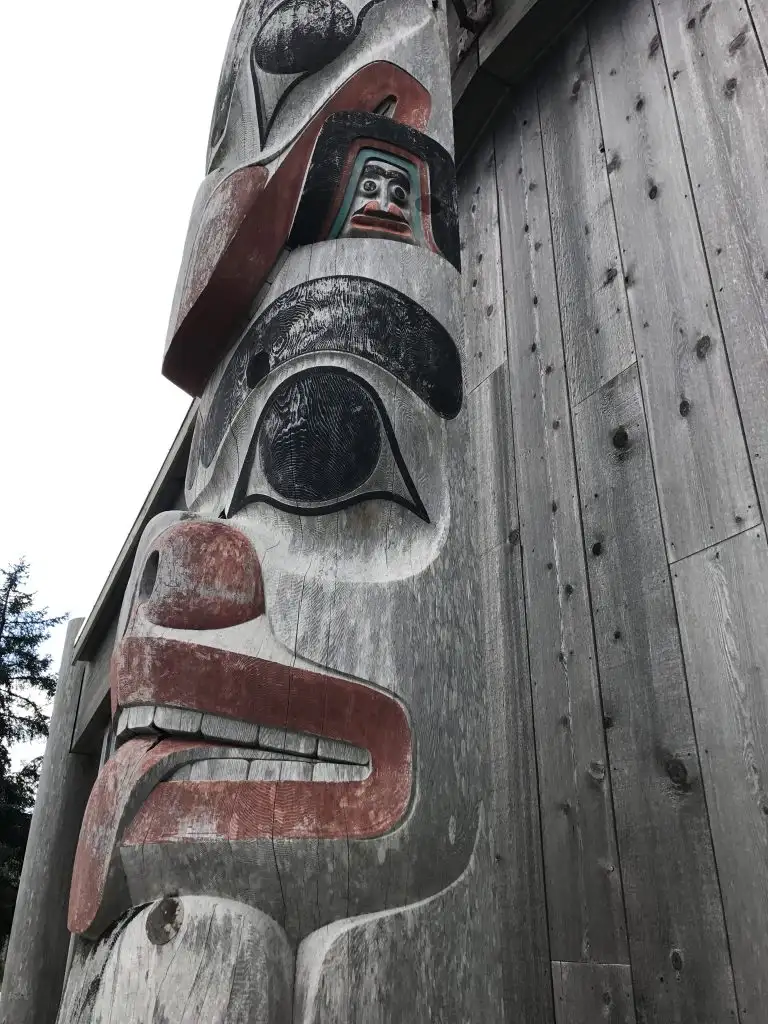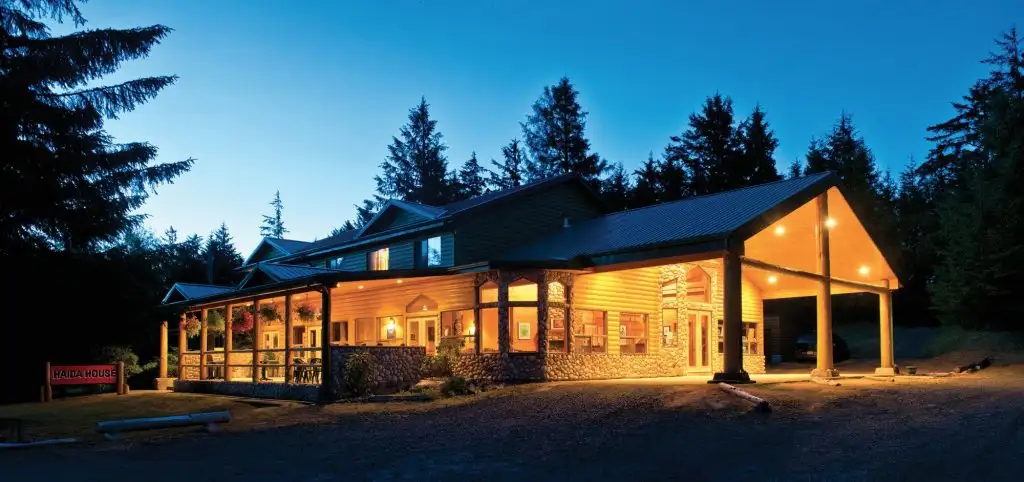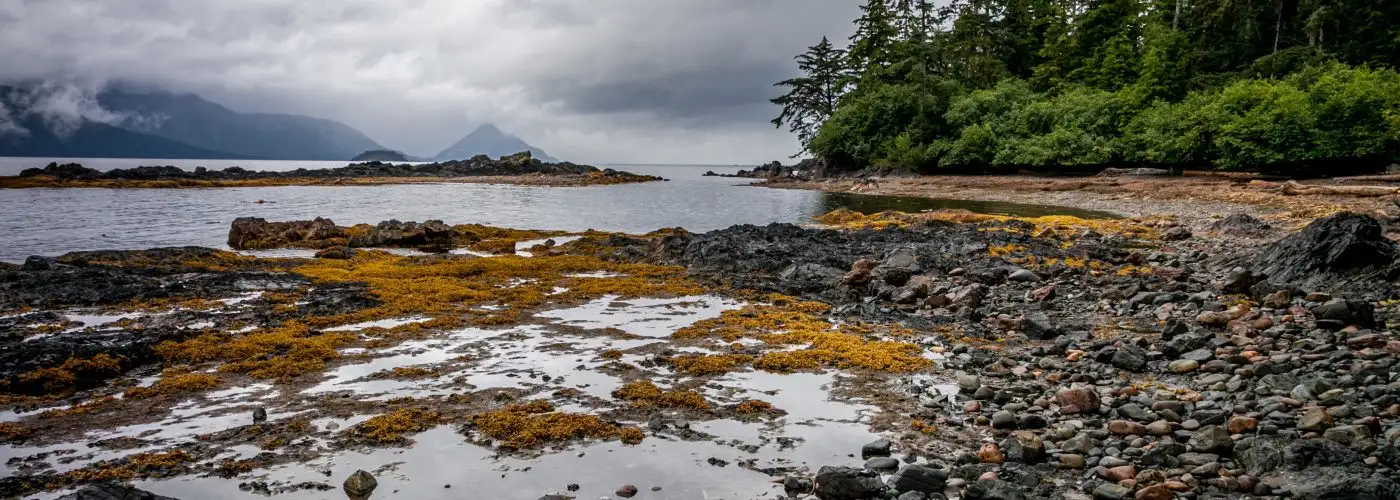Tucked away somewhere just below Alaska and off the coast of northwest Canada lies Haida Gwaii. Wander the west coast beaches and you’ll find Japanese ramen containers and other “tsunami trash.” Try to sail through its passages and you could be stuck in seconds. This place is not for the unadventurous. A trip here requires patience, a willingness to unplug, and an urge to trust and connect with the local people.
To the west is nothing but ocean until you reach Japan. With no land masses between them, the Haida Gwaii islands are met with a very powerful ocean and an uninterrupted force of nature. An ocean so powerful, that the west coast is one of the most dangerous for mariners, and trash from the 2011 Japanese tsunami still washes ashore.
Haida Gwaii Will Get You to Unplug
There’s no cell service in most parts, and accommodations have limited bandwidth on their Wi-Fi. Coming here is a forced (and often welcomed) digital detox. You won’t be trying to post to Instagram because you literally can’t, and after just a few hours on the island, you’ll appreciate that.
What Haida Gwaii does have is immense wildlife, an insane coastline, and a fascinating native population.
Haida Gwaii, Islands of the People
The Haida people are to thank for the pure experience. Native to the island chain, the Haidas have lived on Haida Gwaii (which translates to “Islands of the People” in Haida) for over 12,500 years, with some recent discoveries dating the population as far back as 17,000 years ago. They established trade with Japan, Hawaii, California, and even Mexico thousands of years ago, and passed down their culture through oral history. Right now there are about 1,400 Haidas (the total island population is about 4,500) living on the islands who continuously work to protect their land and culture.
Haida traditions run strong on the islands, especially their connection to nature. Haida art is recognized worldwide, and can be seen in wooden carvings or totem poles, jewelry-making, and cedar basket weaving. Haida art materials come directly from the earth, using elements like red cedar trees for totem poles and naturally pigmented paints—to get the color red, they use deer blood.
But the most important relationship within Haida culture is that of man to sea. In the Haida language they have 54 words alone just to describe the movement of the ocean. A Haida diet consists mostly of food from the sea, like salmon, kelp, seaweed, crab, halibut, and roe.

On the islands, you can eat at Keenawaii’s Kitchen—a restaurant inside chef Roberta Olson’s home—for a traditional welcoming meal.
Protecting Haida Gwaii
As a First Nations people, they’ve struggled (like many) to maintain their identity, but have done so by protecting their environment and culture politically, and now with culturally responsible tourism.
In order to preserve not only the environment and oceans, but also their culture, the Haidas created a “watchmen” program. This helps protect important Haida Gwaii sites, as well as teaches visitors about the history and importance of their heritage. The concept of the watchmen is taken from traditional Haida clan structure, where three members stood watch over the land, sky, and sea. Now, the watchmen oversee five important sights on the island—K’uuna (or Skedans), T’aanuu (Tanu), SGaang Gwaii (Anthony Island/Ninstints), Klk’yah (Windy Bay), and Gandle K’in (Hotspring Island)—and ensure their environmental and cultural preservation.

Make sure to visit the Haida Heritage Center before you go off on your own, for an overview of the Haida Gwaii culture and a chance to talk to Haida people and even some watchmen. You’ll find the five watchmen sights in Gwaii Haanas, the national park reserve on the Southern part of the island. Another highlight of the national park reserve is the wildlife. Known as “the Canadian Galapagos,” you’ll find everything from orcas to falcons to black bears on this archipelago.
When visiting the national reserve, Gwaii Haanas, or “Islands of Beauty”, visitors must first go through an orientation. You’ll learn about the watchmen, things to do (how to camp, where to sail and kayak, etc.), and safety tips. Other ways you can enjoy the island and culture include via sea plane, on ocean excursions or fishing trips, by hiking, and more. Go at it on your own, or take an organized tour through different parts of the park via boat, kayak, plane, and overnight hiking tours.
Travel Tips for Haida Gwaii, Where to Stay, Eat, and Transportation
The Haida House is a great place to stay for a glimpse at Haida culture and for an all-inclusive experience. It offers traditional (and delicious) meals, helps organize tours, and has its own cultural ambassador. Plus, the sunrise view is killer. The resort has a good relationship with all the locals on the island, and on my trip we took a boat tour with Haida Style Expeditions. At the end we pulled up the captain’s crab traps and brought about 20 crabs back to the Haida House to have on the menu for dinner.

For transportation on Haida Gwaii, it’s best to rent a car—unless you arrange for different tour operators to pick you up. There are a few taxis, but service outside of the two main towns, Masset and Queen Charlotte, is limited. Note, you’ll most likely have cellphone signal in these areas.
Meals will vary depending on your accommodations, but there are a variety of no-frills coffee shops and restaurants in both Masset and Queen Charlotte. Head to Jag’s Beanstalk for an Aussie-style cafe with terrific coffee and sandwiches; or hit up Queen B’s in Queen Charlotte for the world’s best matcha green tea latte—at least the best I’ve ever had. (You can Instagram it later.)
These small towns prove that there is more to the islands than just old-growth forests and campsites. There’s a thriving population adapting to modern-day technology and pop culture that’s still willing to sacrifice almost anything for Mother Nature.
Come for the wilderness, stay for the people. And remember yah’guudang, which means “respect for all things.”
More from SmarterTravel:
- What to Pack for British Columbia, Canada
- 10 Secret Places to Go in British Columbia
- We Bet You’ve Never Heard of the Canadian Galapagos!
Ashley traveled to Haida Gwaii courtesy of Destination BC. Follow all of her adventures (big and small) on Instagram and Twitter.
We hand-pick everything we recommend and select items through testing and reviews. Some products are sent to us free of charge with no incentive to offer a favorable review. We offer our unbiased opinions and do not accept compensation to review products. All items are in stock and prices are accurate at the time of publication. If you buy something through our links, we may earn a commission.
Related
Top Fares From
Today's Top Travel Deals
Brought to you by ShermansTravel
France: 8-Night Paris, Avignon & Nice...
Infinity Worldwide Vacations
 vacation
$2880+
vacation
$2880+
Poconos: 3 Nts in Garden of...
ResortsAndLodges.com
 hotel
$305+
hotel
$305+
7-Nt Canada & New England Cruise,...
Princess Cruises
 cruise
$839+
cruise
$839+




